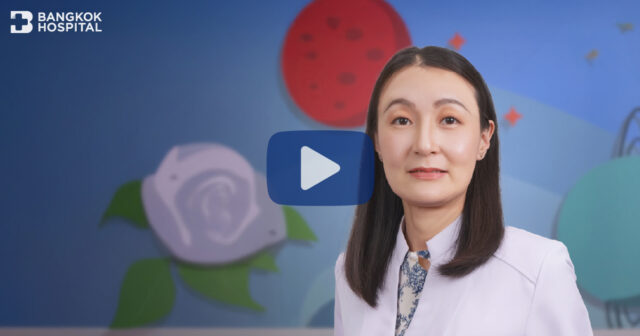Vascular birthmark in infant or hemangioma in children are subjects that parents should pay close attention. Although it may not further develop into malignancy, it may cause skin disorder. If you see a birthmark that looks like a raised blister or dark red lump, you should consult a doctor for treatment as soon as possible.
What is an Infantile Hemangioma?
Infantile Hemangioma is a kind of vascular tumor that is often found in newborns and infants. It is neither contagious nor malignant. At first, you may notice a red dot that looks like an insect bite or a flatten rash that is lighter in color and appears bruise-like. During the first 4 weeks, the size increases very fast and will appear very large by 9 to 12 months. Then, it stabilizes for a short period of time and starts to shrink and fades away when the baby is 1-2 years old. If left untreated, the mark will fade slowly at the rate of about 10% per year, but it will leave residual mark, such as extra blood vessels, excessive fibrosis in the adipose tissue, scar from abrasion or keloid which will make children lose their confidence.
What Does Infantile Hemangioma Look Like?
- The shape or form will be according to the depth of the lesion.
- The top part will appear as a red raised lump with smooth or rough surface.
- The lower part will be a raised lump with unidentified border. It will be the same color as the skin, bluish green, or both.
- It is commonly found in the head and neck, trunks, arms and legs.
- Usually, it appears in one place but in some cases, it can be in multiple spots.

Treatment
Treatment option depends on various factors, such as type, size, position, depth, and complications. Treatment tends to be given if the lesions are found on the face and if they may cause complications, such as around the eyes, respiratory tract, mouth, and genitals, etc. But if there is a single lesion with no complications, it can go away by itself. Treatment options include:
- Oral medication as recommended by the pediatrician.
- Topical medication for superficial lesions.
- Laser therapy to minimize appearance of blood vessels from the outgrowth.
- Surgery to remove hemangioma with clear margin that is not too large or if there is complication.
Cause for Alarm about Hemangioma
Some complications that are noteworthy of caution when a child has hemangioma:
- Rupture causing pain, bleeding and infection
- If the lesion is around the eye, it may cause strabismus or lazy eye
- Hemangioma may block the ear canal leading to deafness
- If the lesion involves the chin or neck area, it may interfere with the respiratory tract
- When hemangioma appears in more than 5 small foci in different places
- Heart failure can occur if there is a large lesion in the liver
Although infantile hemangioma cannot be prevented, but parents should notice any tumor or red birthmark on the baby’s skin. If there’s any lesion or fast-growing tumor, you should consult specialist immediately.










